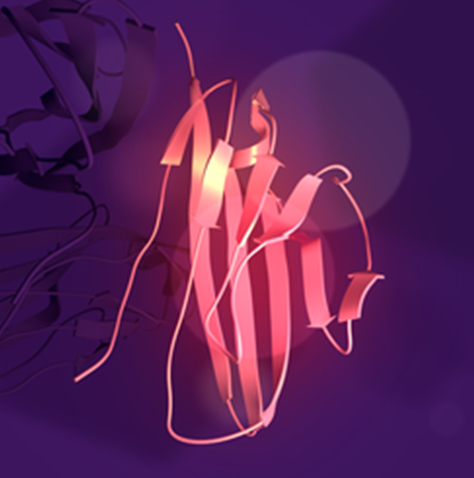- Home
-
Screening
- Ionic Screening Service
-
Ionic Screening Panel
- Ligand Gated Ion Channels
- Glycine Receptors
- 5-HT Receptors3
- Nicotinic Acetylcholine Receptors
- Ionotropic Glutamate-gated Receptors
- GABAa Receptors
- Cystic Fibrosis Transmembrane Conductance Regulators (CFTR)
- ATP gated P2X Channels
- Voltage-Gated Ion Channels
- Calcium Channels
- Chloride Channels
- Potassium Channels
- Sodium Channels
- ASICs
- TRP Channels
- Other Ion Channels
- Stable Cell Lines
- Cardiology
- Neurology
- Ophthalmology
-
Platform
-
Experiment Systems
- Xenopus Oocyte Screening Model
- Acute Isolated Cardiomyocytes
- Acute Dissociated Neurons
- Primary Cultured Neurons
- Cultured Neuronal Cell Lines
- iPSC-derived Cardiomyocytes/Neurons
- Acute/Cultured Organotypic Brain Slices
- Oxygen Glucose Deprivation Model
- 3D Cell Culture
- iPSC-derived Neurons
- Isolation and culture of neural stem/progenitor cells
- Animal Models
- Techinques
- Resource
- Equipment
-
Experiment Systems
- Order
- Careers
- Home
- Symbol Search
- scn3b
scn3b
| Catalog | Product Name | Gene Name | Species | Morphology | Price |
|---|---|---|---|---|---|
| ACC-RI0172 | Human SCN10A/SCN3B Stable Cell Line-CHO | SCN3B | Human | Epithelial-like | INQUIRY |
Voltage-gated sodium channels are transmembrane glycoprotein complexes composed of large α subunits and one or more regulatory β subunits. The sodium channel subunit β3 is a protein encoded by the SCN3B gene in humans. This protein is involved in the composition of voltage-gated sodium channels. The human β3 gene has been located on chromosome 11q23.3. Interestingly, β2 gene and human N-CAM gene are also located near this region. These distantly related genes are likely to have evolved through repeated replication. Further studies have found that both β1 and β3 can cause voltage-dependent inactivation of hyperpolarization transfer, and adjust the α subunit by increasing the proportion of channels operating in fast gating mode. Combined with sequence homology, it is indicated that β1 and β3 are structurally different members of a single functional auxiliary subunit.
SCN3B Cloning and Expression
The researchers cloned rat Scn3b and used the rat sequence as a probe to isolate human Scn3b from the striatal cDNA library. Through further structural analysis, it is found that the SCN3B protein contains 215 amino acids, including an n-terminal signal sequence, an extracellular n-terminal domain, a single transmembrane region, and a c-terminal cytoplasmic region. The extracellular domain shows homology with a protein folded with v-type Ig. It is composed of 10 β chains, forming 2 anti-parallel sheets. The researchers used various biotechnologies to distribute the expression in rat brain tissue, adrenal glands and kidneys, forebrain structure and hippocampus, and human atria and ventricles.

Figure 1. The structures of SCN3B. (From wikipedia.org)
SCN3B and Disease
Although many people with Brugada syndrome have no symptoms, Brugada syndrome can cause fainting or sudden cardiac death due to severe abnormal heart rhythms such as ventricular fibrillation or polymorphic ventricular tachycardia. The power outage may be caused by transient abnormal heart rhythms that spontaneously return to normal heart rhythms. If the dangerous heart rhythm does not stop on its own and is not treated, the person may suffer a fatal cardiac arrest. However, although the heart rhythm is normal due to a sudden drop in blood pressure (called vasovagal syncope), patients with Brugada syndrome may still experience fainting. The cells of the heart communicate with each other through electrical signals, which are destroyed in people with Brugada syndrome. As a genetic disease, the syndrome is ultimately caused by changes in human DNA (called genetic mutations). A related mutation described in Brugada syndrome is the SCN3B gene responsible for the sodium channel, which controls the passage of sodium ions through the cell membrane of the heart muscle cells. Many of the subsequent genetic mutations associated with Brugada syndrome affect the sodium current in some way, or affect other ionic currents.
Atrial fibrillation (AF or A-fib) is an abnormal heart rhythm (arrhythmia) characterized by rapid irregular beats of the atrium. It usually starts as a short-term abnormal beat, and will become longer or sustained over time It may also start in other forms of arrhythmia, such as atrial flutter, and then change to atrial fibrillation. Occasionally, there may be palpitations, syncope, dizziness, shortness of breath or chest pain. This disease is associated with an increased risk of heart failure, dementia, and stroke. This is a type of supraventricular tachycardia. Through clinical studies, it was found that a variety of missense mutations in the SCN3B gene were found in patients with atrial fibrillation.
References
- Hu, D., et al.; A mutation in the beta-3 subunit of the cardiac sodium channel associated with Brugada ECG phenotype. Circ. Cardiovasc. Genet. 2009, 2: 270-278.
- Morgan, K., et al.; Beta-3: an additional auxiliary subunit of the voltage-sensitive sodium channel that modulates channel gating with distinct kinetics. Proc. Nat. Acad. Sci. 2000, 97: 2308-2313.
- Olesen, M. S., et al.;Mutations in sodium channel beta-subunit SCN3B are associated with early-onset lone atrial fibrillation. Cardiovasc. Res. 2011, 89: 786-793.
- Kevin Morgan, et al.; β3: An additional auxiliary subunit of the voltage-sensitive sodium channel that modulates channel gating with distinct kinetics. PNAS. 2000, 97 (5) 2308-2313.
Inquiry
